I’ve been reflecting on what I would consider the non-negotiables of writing instruction at the middle school level. Over the years, I’ve shifted how I teach writing to students. Along the way, new instructional practices have been added while others have been left behind.
To the writing teacher reading this blog post and nodding your head but wondering how you can shift instruction within a school system that doesn’t allow you to, please know I see you, and this blog post is for you. Maybe you are part of a team that has common lessons, and you know it will be a tough sell to get other team members on board to make a change. You could be required to teach using a certain curriculum and feel uninspired and stuck. If you fall into one of these categories or a similar category, I’m including a free download that includes an instruction checklist. This checklist is meant to be used as an avenue for productive conversation with your curriculum coordinator, department chair, grade level content colleagues, PLC members, etc. Download the checklist by clicking on the image below.
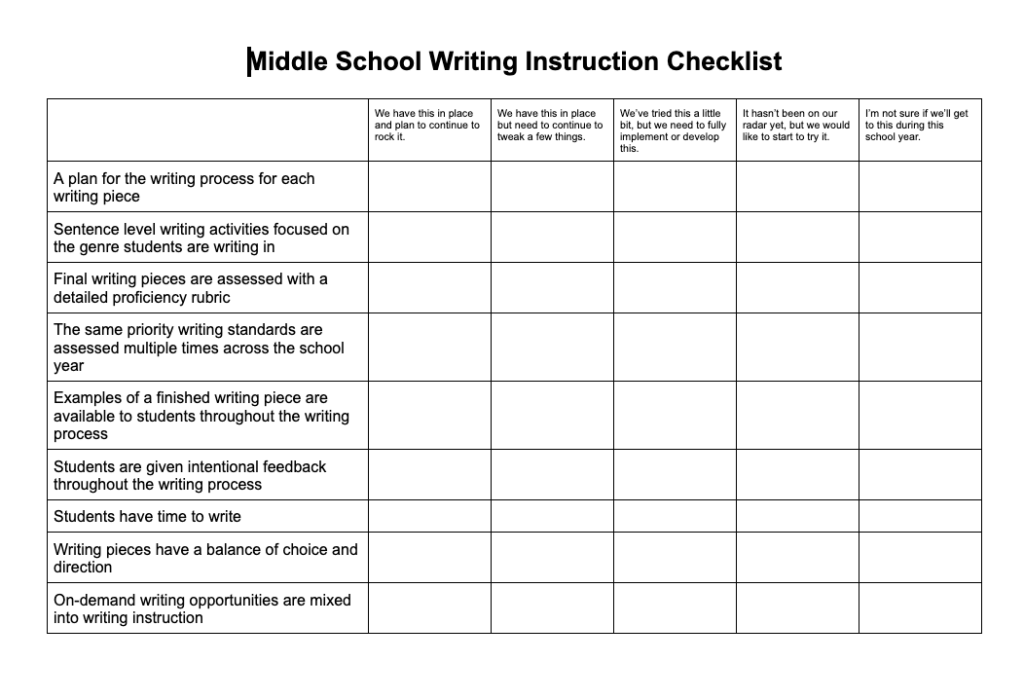
Non-Negotiable 1: A plan for the writing process
If students are going to produce a piece of writing, you should have a plan for how you’re going to get them from the beginning of the writing process to a published piece of writing. I have found the sweet spot of instructional time to spend on a single writing piece to be 2-3 weeks. I distribute the instructional days across the writing process and create a writing lesson for each day that will bring students from start to finish. The pieces of the writing process that I use are genre immersion, brainstorm & pre-write, organize & outline, draft, revise, edit, publish & share. Below is an example of a unit plan from my “Ask Anything” research writing unit that shows each writing lesson and what part of the writing process each writing lesson is in.
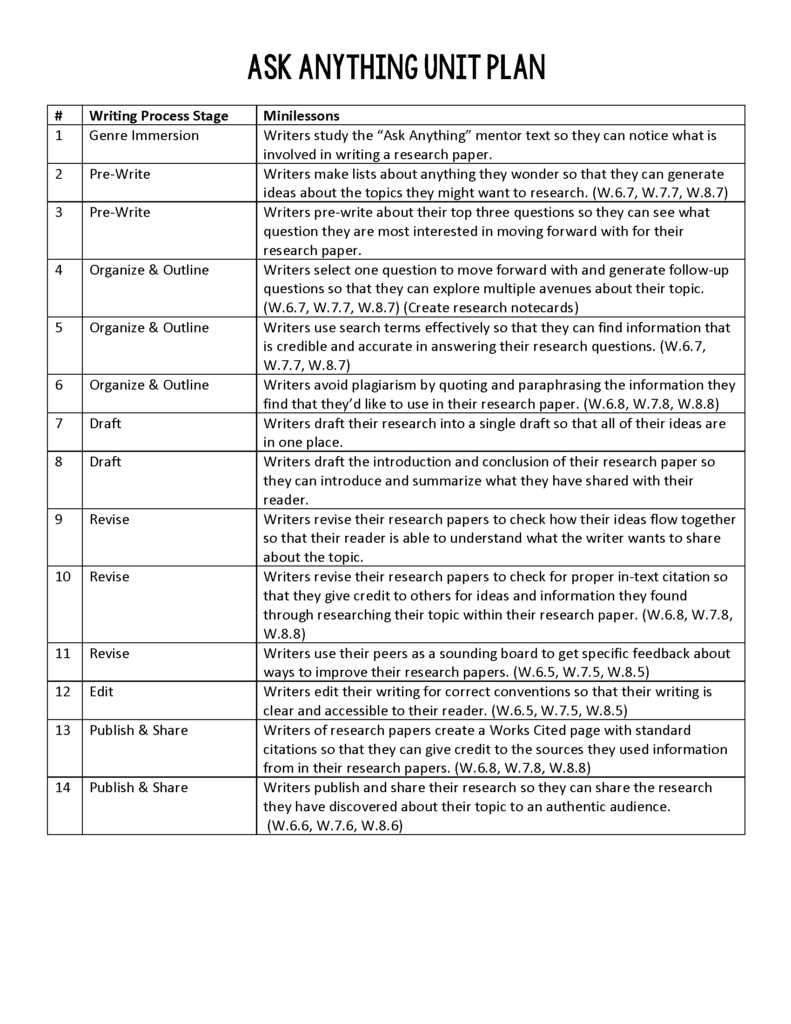
Non-Negotiable 2: Sentence level writing activities focused on the genre students are writing in.
It is clear students need sentence level writing activities. We must explicitly teach students how to write in complete sentences. Teaching grammar and writing conventions in isolation apart from students writing is not going to work. If we truly want to see the transfer of correct conventions into student writing, we must teach grammar through student writing.
I do sentence level writing activities as bellringers (do nows, class starters, etc.), focusing on a different types of sentences (complex, compound, sentence with an appositive, listing items in a series, sentence with two adjectives describing one noun) across the writing unit. As I teach about the different types of sentences, I model writing these types of sentences from the topic of our mentor text for the current writing unit. As students rehearse writing these types of sentences, they write the sentences with their topic for the current writing unit. Students don’t have to use the sentences they write in their final writing piece, but a lot of students do use the sentences they rehearse or variations of the sentences they try out. We rehearse the same types of sentences during each writing unit, but switch out the content we’re writing about to match our current writing unit topic.
Here are some examples below of what sentence level instruction and example sentences look like.
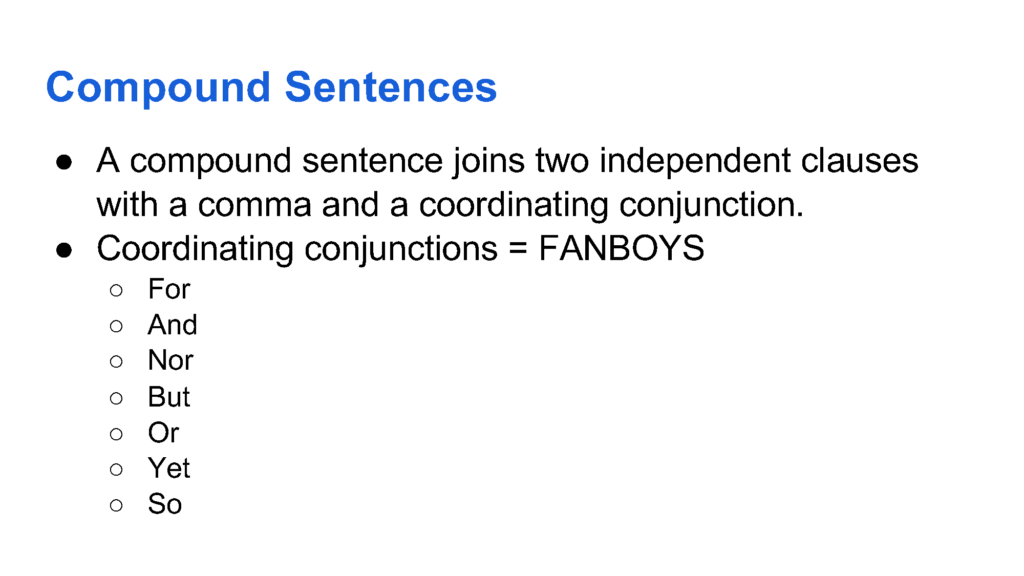
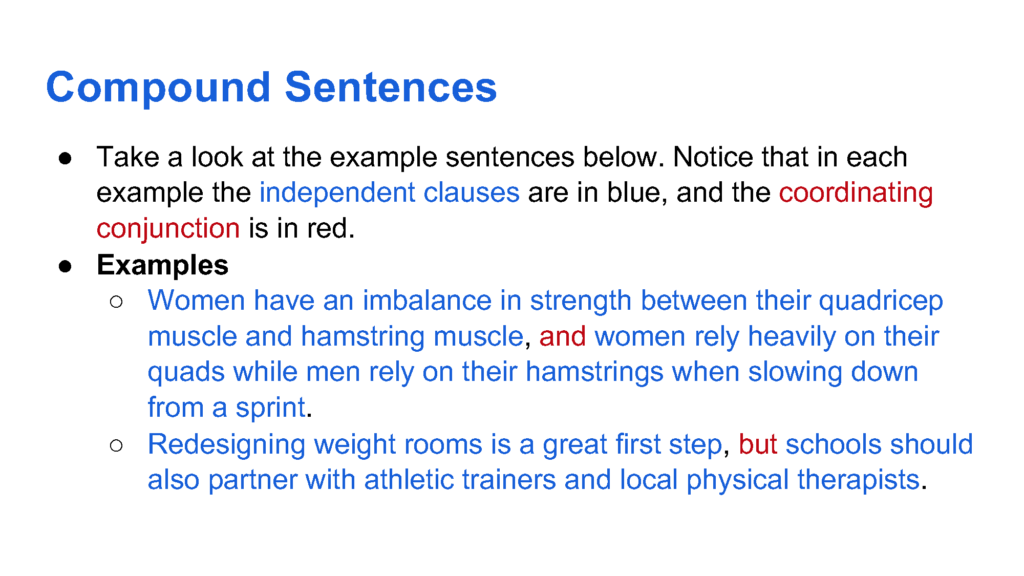
Non-Negotiable 3: Final writing pieces are assessed with a detailed proficiency rubric
I’ve tried so many different types of rubrics over the years. Once my school made the shift to Standards Based Grading and Learning, I fell in love with proficiency rubrics. For teachers who work as a team and want to calibrate grading, proficiency rubrics are the way to go. Proficiency rubrics also save so much time on giving students feedback on their writing. If the proficiency rubric is written specifically for the writing piece it is assessing, then feedback is built into the rubric. Here is an example of the proficiency rubric that goes along with my “Ask Anything” writing unit.
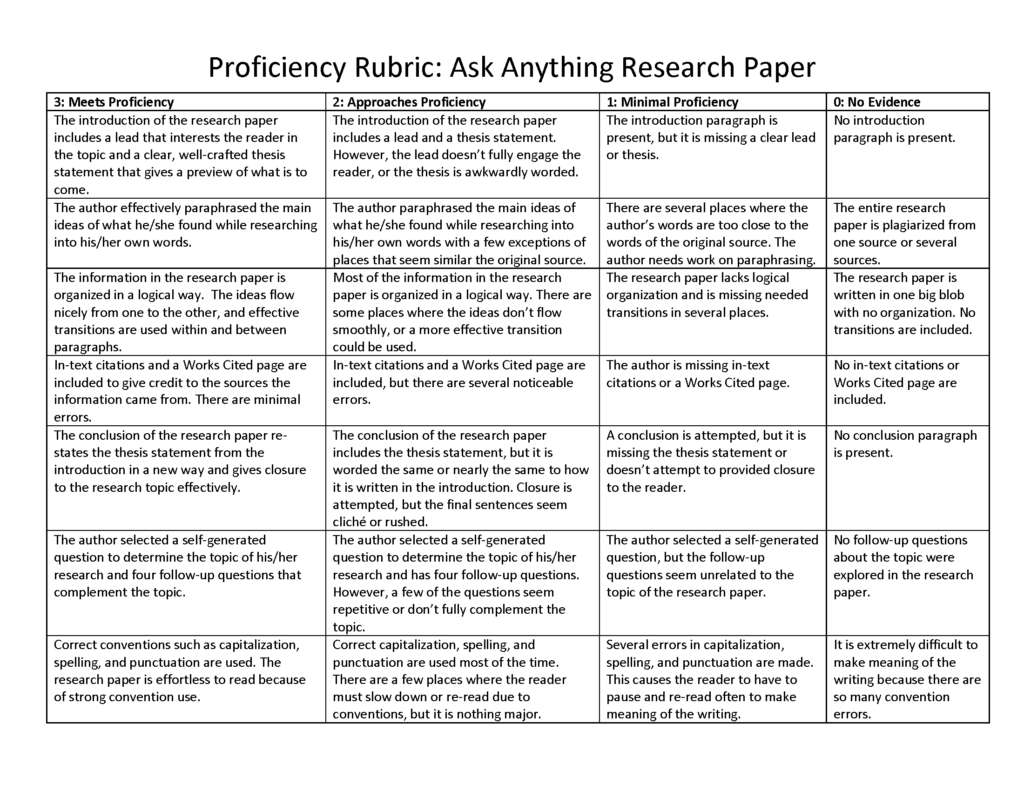
Non-Negotiable 4: The same priority writing standards are assessed multiple times across the school year.
Standards ask us to have students write in different genres of writing: narrative, persuasive, explanatory/informative, research. However, we need to be clear on the common threads that will be taught and assessed during each unit, regardless of genre. Here are a few ideas:
-Transitions/Sentence Fluency
-Organization
-Word Choice
-Conventions (capitalization, spelling, punctuation)
-Ideas meeting purpose of the genre
Non-Negotiable 5: Examples of a finished writing piece are available to students throughout the writing process
Students need to see what the end product is going to look like and sound like. I recommend always completing the writing piece you’re asking students to do. It’s great perspective to know what to teach for and how to encourage students throughout the writing process. Additionally, if you do through the writing process with students, you not only have a published piece to share with them, you also have your brainstorming, prewriting, outline, initial draft, revisions, edits, etc. Being able to model to students how to do each step of the writing process is so authentic and powerful.
Having published student pieces from prior school years is another great way to acquire mentor texts to share with students. The past work of students with have different voices and topics than we would write as adults. It will also potentially give students a more attainable mentor text to shoot for.
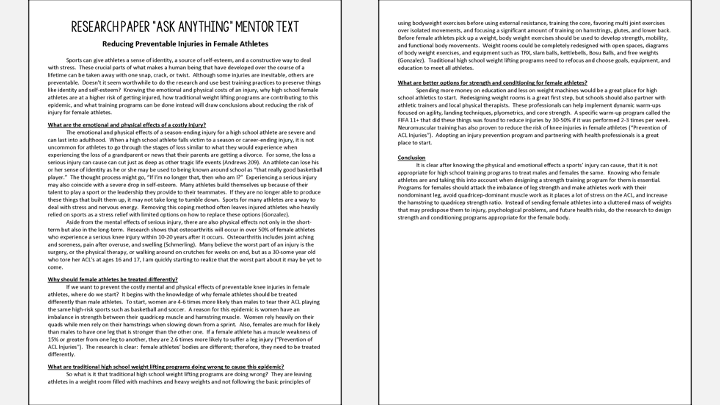
Non-Negotiable 6: Students are given intentional feedback throughout the writing process
When writing is a process that spans over several weeks, teachers need to be intentional about when and how feedback is going to happen.
-Plan checkpoints on the unit plan of when you’re going to look over student writing and give feedback during the writing process. I really love Google Classroom for this because I have access to student work at any point in the writing process. It’s quick and easy for me to hop onto students’ drafts and look through how they’re going and leave comments.
-Use peer feedback opportunities as a place for students to read their writing to each other and get verbal feedback. I’m not a huge fan of students swapping writing and doing correct-alls to each others’ writing because that’s where we lose what individual students know in the writing process. When students read their writing aloud and have conversations with other students as they seek and provide feedback to each other, great learning happens in that space.
-Use the proficiency rubric to have students self-assess their writing at different points of the writing process. Proficiency rubrics are great for self-assessment and can be used piece-by-piece and not as an overwhelming whole.
Non-Negotiable 7: Students have time to write
Students need time and space during the class period to hear and see what writing is like. They need to feel creative energy and share to create a community of writers. During writing units, I always aim to give students 15 minutes or more of writing time daily.
Non-Negotiable 8: Writing pieces have a balance of choice and direction
As an adult, I enjoy making my own choices, but I also have times when I appreciate having a specific direction and goal. I think students are the same way and thrive when there is a balance of choice and direction. There is one extreme in writing instruction is so structured that students barely have choices in the words they use. Another extreme rests in this free-flowing writing instruction where students can write whatever they want, whenever they want.
I’m a believer that writing should be taught as writing units with clear starting and stopping points. The choice is in the topic and the direction comes from having an expected structure for the writing piece.
Non-Negotiable 9: On-demand writing opportunities are mixed into writing instruction
Writing is a process, but if we always teach writing as a 3-week process without the opportunity for students to write in on-demand formats, we run the risk of producing writers who are perfectionists. Students need to understand that not every piece of writing is going to go through days of revising and editing with feedback given every step of the way. Sometimes we need to produce writing in a single setting, get it done, and move on.
Using on-demand writing as a pre-assessment and/or a post-assessment in a writing unit is a great way to see what students learn and retain. In the “Ask Anything” writing unit I’ve been referring to throughout this post, an on-demand writing opportunity might look like giving students an article and asking them to respond to a research question answered in the article.
These are 9 ideas for what should be included in writing instruction at the middle school level. Don’t forget you can download the free checklist as a resource for yourself or your teaching team here.





